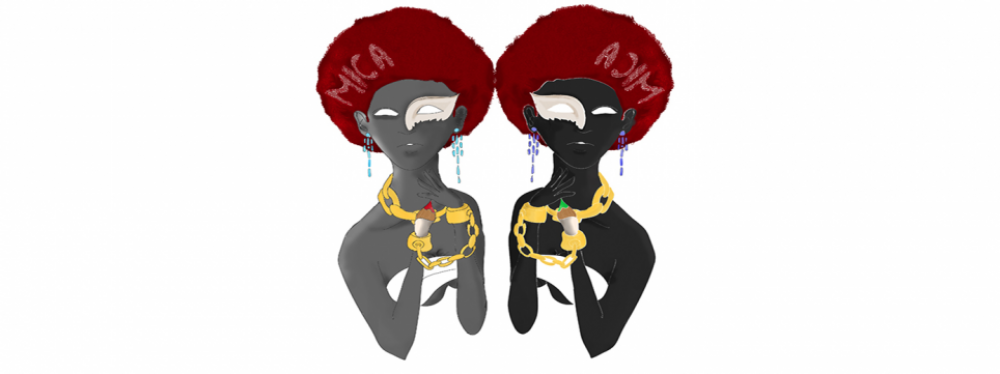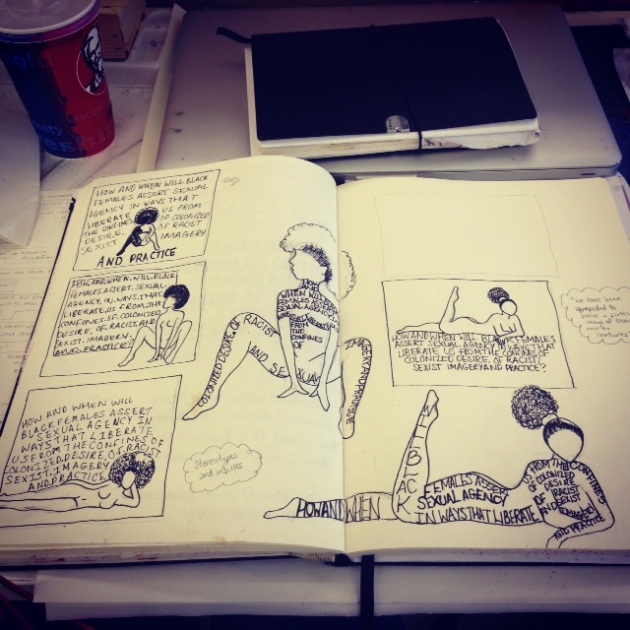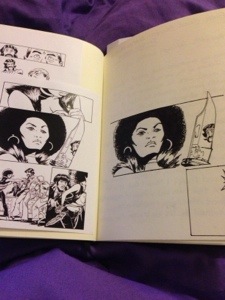So we are now fast approaching the finish line to hand in all our work and set up for our degree show…feeling nervous but also excited as it marks the end of my days as a student and the start of entering the real world as an illustrator.
I got off to a fairly slow start in my opinion, as I was unsure exactly what I wanted to do. Brainstorming at the beginning definitely helped to narrow down the enormous theme I wanted to explore intially, about black people in media. By focusing on black women in media, I think it was still a broad topic to research but still able to produce and refine my images.
Upon my research I think I started to respond personally with my work and was able to get the ball rolling. My digital drawings of my ‘marionnettes’ was the big push forward for me. It summarised the opinions I gathered from my research succesfully and I feel the concept was powerful.
Going more ambitious and large-scale with my papercuts I think was also successful. Having a bold message through text, within the outline of a female figures and physical markers associated with a black woman makes it aesthetically interesting, but also shows I am making a statement. Initially I never imagined papercuts to be my final and best way of working, as I thought printing, painting or photography would be heavily involved. Also being advised to try incorporate beauty products and creating papercuts in the shape of them worked as well. I think all these elements combined together solidifies what I am trying to get across…That black women in media have been shaped, appropriated to a particular image of beauty, and this has had a direct psychological effect on black women in society on how they view themselves physically.
I think the least successful part of FMP was the photoshoot. While I did get some decent photos, it was quite tricky. Because the papercuts had become so fiddly it was hard to get the full shadow that I was hoping to get. However it has opened my eyes up to another way of expereimenting with them.
I still feel like I could do more research, and there are other ideas I wanted to try out. But if I did try them all out I think my focus would’ve been muddled and I wouldn’t have produced the work that I have. So overall I’m quite happy with my work, the processes I’ve used. I’ve been challenged. I’ve had to improvise on the spot at times.
22nd May to hand in all the work? No problem (I hope) 🙂
























